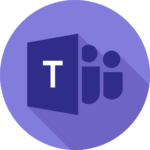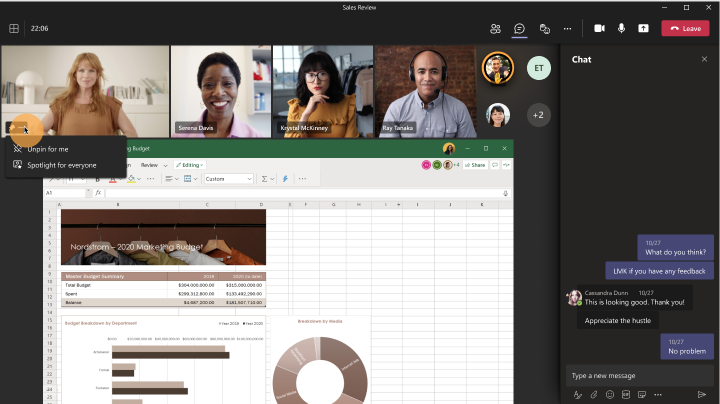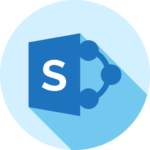Below are all of the relevant MSP related Microsoft announcements from December

Microsoft Teams
1. Configure your activity feed notifications
How this will affect your organization
Users will be able to control the type of notifications that appear in their activity feed. Right click on the feed item, and you will be able to turn on/off all reactions or stop specific app notifications from surfacing in the activity feed.
A key user pain point in activity today is that important information is getting buried and there is just too much noise. Reaction and App activities are one of the top culprits and the ability to turn them off is a top 3 ask from our users. These controls been always been available in Global Notification Settings, yet we continue to hear feedback on this from users due to it’s low discovery.
This calls for a feature that would empower users to intuitively control their notification experience for certain activity feed items by leveraging the existing notification settings. Hence, as a part of the MVP for contextual notification settings, we are building the following features that would enable users to control certain notification settings directly from the activity feed item:
- turn on/off reactions directly from the activity feed
- turn on/off notifications for a specific app directly from the activity feed.
When this will happen
mid-January (currently in Public Preview)
2. Pin your own video in Teams meetings
How this will affect your organization
Currently, users can pin video feeds to increase the size of the desired video on their own screen. This new feature update will expand the ability for users to pin their own video on the stage as well as enable users to see their own video in an increased size on their screen.
New feature will help to tackle various situations:
- No more overlaying of the me video box and other participant’s video
- You will be able to see your own video in a bigger scale and adjust the video form
- You will have a better view of oneself when presenting an object or using sign language
- You will enjoy a balanced view of me and other participants – me video is larger, and no longer transmits an impression of “less importance”


When this will happen
early January and expect to complete rollout in early February
2. Automatically Detect Music
How this will affect your organization
To avoid suppressing music and to allow users to enable the new high-fidelity music mode, we have built an ML-based music detector which will inform the user whenever music is present through a notification. This will give the end user the choice whether music is indeed an unwanted background noise, such as when calling into a meeting from a coffee shop, or if music is a desired signal, such as when participating in a music lesson.
When this will happen
early January and expect to complete rollout in mid-February

Microsoft SharePoint
1. Manage Teams and channel connected team sites in SharePoint admin center
How this will affect your organization
We are enhancing the Active site experience in SharePoint admin center to include channel sites that are provisioned when a special channel is added to a Team.
Enhancements included in this release:
- New Teams view that filters the sites list to only sites that are Teams connected.
- New column identifying the site is connected to teams.
- New column identifying the team connected site has associated Private or Shared channel sites.
- Additional entry points from Teams connected site info panel
- All new Active sites pivot showing the channel sites associated to the teams connected site.
- The pivot includes a list of channel sites that are associated to the Teams connected site. This list will only include Private sites as of now and will expend to include other special sites in the future. Channel are view only and inherit properties from Teams that are managed in Teams admin center.
- New Type column that accessible from the new Active Sites pivot.
- Ability to manage Channel site storage limit.

When this will happen:
early December and expect to complete the rollout by late January.
2. Use of Azure Active Directory Dynamic Groups now supported for SharePoint Online audience targeting
How this will affect your organization
We now officially support the use of Azure Active Directory Dynamic Groups to be used as audiences within SharePoint Online’s audience targeting system. Previously, we supported Active Directory (AD) security groups and Microsoft 365 groups. Support of dynamic groups will expand capabilities of SharePoint’s audience targeting to deliver additional richness in the types of groups that can be used.
When this will happen:
GA

Microsoft Admin
1. Delegated Administrative Privileges (DAP) monitoring and self-service removal
How this will affect your organization
Partners can use delegated administrative privileges (DAP) to manage and support their customers’ services. To improve security within the partner and customer ecosystem, Microsoft recommends turning off DAP when it’s not in use.
Microsoft has launched new reporting tools so partners’ administration agents can audit existing DAP connections with their customers. This reporting will capture how partner agents are accessing customer tenants across all tenants through DAP. Partners can then review and remove the DAP connection when it isn’t in active use.
In partner center, navigate to Settings>Account Settings>Security Center>Administrative Relationships

2. Technical release of granular delegated admin privileges (GDAP)
How this will affect your organization
Microsoft is launching a technical preview for GDAP so partners can test granular and time-bound access to workloads in production and sandbox environments.
I discussed this last month and have a detailed blog post you can check out here: https://tminus365.com/granular-delegated-admin-privileges/


When this will happen:
Jan 2022
3. Upcoming Release Outbound SMTP DANE and DNSSEC in Microsoft 365 Exchange Online
How this will affect your organization
adding support for SMTP DANE and DNSSEC to Exchange Online (EXO). DANE combined with DNSSEC is the state-of-the-art for securing email, and to optimize its effectiveness both standards will be enabled by default at the system level for all EXO customers.
When your users send email to business partners and customers outside of Exchange Online, if the receiving side has correctly configured DANE and DNSSEC then you will get the enhanced security benefits of DANE and DNSSEC automatically. While it’s unlikely to happen, if the recipient’s admin has misconfigured DANE and DNSSEC, or if they have correctly configured the standards but their system has been compromised, mail flow to the recipients will be blocked. This is by design: when DANE or DNSSEC validations against the recipient domain fails, whether due to misconfiguration or compromise, it signals to EXO that the receiving system cannot be trusted and your email to them should not be sent. Our analysis shows that only 0.00023% of all EXO domains send emails to recipients that fall into one of these two categories.
In case of DANE or DNSSEC failures resulting in blocked messages, your senders will receive a bounce message (aka NDR) that includes information about the problem. Email admins will also be able to use the following tools to diagnose recipient or partner side issues:
- Message Trace Details for pending and failed blocked messages
- The Microsoft Remote Connectivity Analyzer (RCA) tool to run validation tests against recipient domains.
- Note that the RCA tool is being updated to support DNSSEC and DANE validation tests. We estimate the new RCA functionality will be deployed in Q1 2022.
When this will happen:
The first phase, DANE and DNSSEC for outbound email, will roll out slowly beginning mid-January 2022 and finish by late May 2022.
